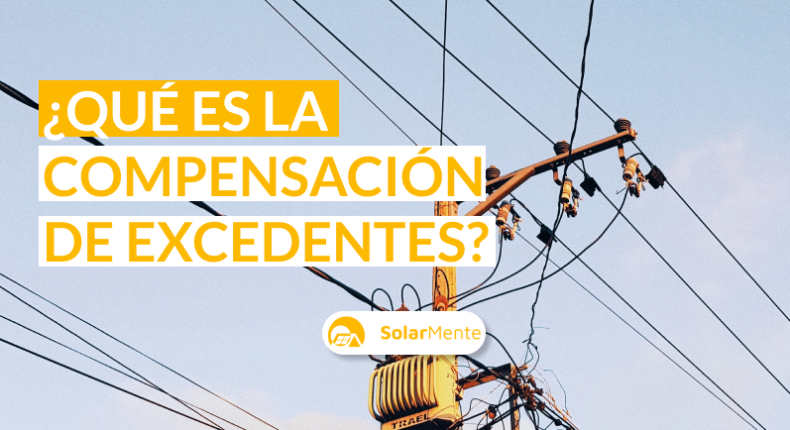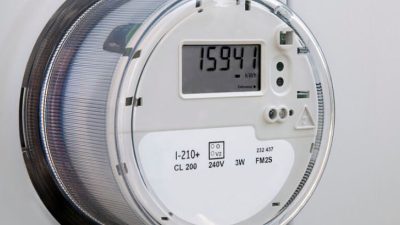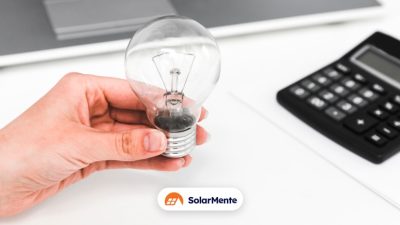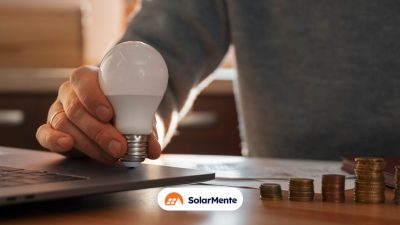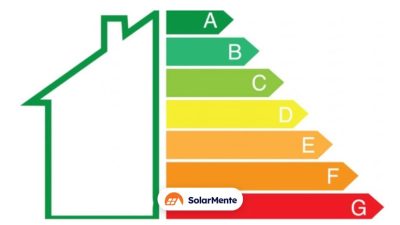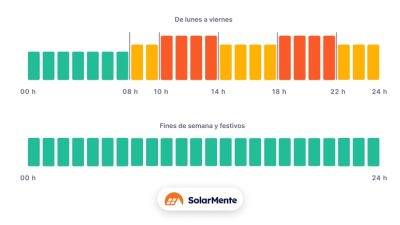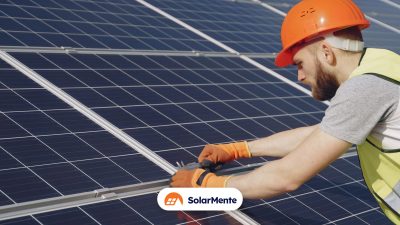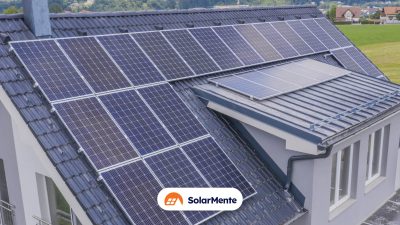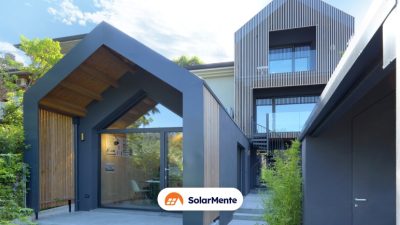Years ago, the regulations concerning the installation of solar panels in Spanish households presented various requirements and obstacles to benefit from self-consumption.
Self-consumption is a term that – fortunately – is gaining in popularity year after year in Spain. Many homeowners are realising that it is an economical solution that they had not considered before, achieving significant energy savings with up to 60% less in electricity bill consumption.
Thanks to the new subsidy package for self-consumption and the administrative, technical and economic regulations for electricity production, access to solar energy is becoming easier and easier. In addition, the compensation of surpluses for solar energy fed into the grid has been established.
In this article we will show you what surplus compensation for self-consumption is. We will also discuss the following points:
-
The types of self-supply.
-
How to see this compensation reflected in your electricity bill.
-
Necessary requirements to access this modality.
-
Administrative procedures.
-
What is the price of the energy fed into the grid.
-
How to identify it on your electricity bill.
-
Example of a SolarMente customer.
How does surplus compensation work?
From the surplus solar energy generated by the photovoltaic system and that you do not consume, you can:
-
Dispose of it.
-
Store it in a battery (if this component is available).
-
Pour it into the grid to receive financial compensation or sell the energy on the electricity market.
Having said that, we are going to explain the different options for your surplus energy.
Self-consumption without surplus
Those installations without surpluses that do not have the structure to discharge the surplus to the grid, use an anti-discharge system with the aim of avoiding the transfer of surplus energy to the electricity grid. Consequently, these homes will not receive financial compensation for the surplus generated.
This means that the full responsibility lies with the owner of the system. And if the measures established by the regulations for self-consumption are not complied with or the necessary permits for the installation of solar panels are not issued, the owner is liable for this.
But of course, the situation changes if we are talking about collective self-consumption.
For example, in communities of neighbours, you will have the right to the compensation of surpluses as long as the community agrees to it, establishing a distribution to each household in order to transfer this information to the corresponding electricity supplier.
This type of contract is not obliged to apply for access and connection permits. In this sense, bureaucracy is not an obstacle thanks to the simplification of procedures.
Self-consumption with surpluses
On the other hand, we have the compensation of surpluses for self-consumption, which comes from the production of surplus energy from our system that will be fed into the electricity grid.
In any case, this modality includes two different paths:
-
Self-consumption with surpluses without simplified compensation.
-
Simplified compensation of surpluses or self-consumption with surpluses subject to compensation.
Self-consumption with surplus without simplified compensation.
This modality allows the dumping of surpluses generated with the photovoltaic installation that could not be consumed.
And what do we do with this surplus energy? The process works as follows.
You do not receive any financial compensation, but sell it at the current electricity market price. The problem is that in the future it does not compensate for all the work involved. You will have to register as an electricity producer and, not only that, the tax authorities will demand the declaration of this income.
Therefore, not only price fluctuations intervene, but also a 7% Tax on the Value of the Production of Electrical Energy (IVPEE) is applied.
In reality, the benefit received for a house does not compensate for all the work involved.
Anyway, if you want to see the market prices, the Red Eléctrica de España offers information on its website on the daily variations of energy sales prices.
Self-consumption with simplified surplus compensation
In the same way as the previous modality, the surpluses generated by the solar panels are fed into the electricity grid.
However, there is a clear difference: the customer receives financial compensation from the electricity supplier through the electricity bill at the market price determined by the company with the customer.
This discount is reflected in the monthly bill and results in higher savings.
It is important not to confuse the financial compensation received from the supplier with the sale of energy. They are two different things and are treated as such.
What are the requirements to access the surplus compensation?
To access the compensation of self-consumption surpluses, note the following conditions to be fulfilled:
-
The origin of the energy source must be renewable.
-
The installed power must be less than 100 kW.
-
The beneficiary can only register one contract of these characteristics.
-
The installation cannot have an additional remuneration system, i.e. it cannot be profitable.
Administrative formalities to benefit from surplus compensation
It is important to note that each autonomous community is different.
Once the photovoltaic installation has been legalised under the conditions established by the photovoltaic self-consumption regulations and the specific procedures of the municipalities, each competent body informs the distribution company of the legal right to discharge the surpluses generated.
Then, once the distribution company (with which you have your electricity supply contract) has been informed, it will contact the consumer to sign a new contract. This document includes the remuneration of the surplus as a surplus energy discount.
However, you will have a period of 10 days to express your agreement, otherwise the conditions established in the contract will be accepted.
If you finally decide to opt for the self-consumption system with surplus compensation, at SolarMente we will take care of the process with the personalised attention you deserve and we will monitor you to ensure a correct installation.
>> If you want to take advantage of all the benefits of solar energy and install solar panels with a surplus compensation contract, click here and we will get down to work.
And what is the price for the surplus compensation?
The price depends on the supplier with whom you have contracted the electricity network.
In reality, the company will not buy your surplus at a higher price than the market price.
You can be sure that the price of the surplus energy you have generated through your photovoltaic installation will be lower than the price you have contracted with the traditional electricity grid. At present, the price of surplus energy is around 0.06 euros/kWh.
The savings can vary according to the tariffs contracted with the company, differentiating between fixed and variable.
In the first case, prices are maintained and, as a general rule, there is the condition of permanence for one year. However, variable prices change constantly, saving more or less depending on this fluctuation.
How can I see the surplus compensation reflected in my electricity bill?
It is very simple.
In your electricity bill there is a section where you will see the economic compensation with a discount. It will be the result of the difference between the amount of electricity consumed from the grid and the surplus discharged.
But don’t forget that there is a limit.
Pay attention.
The distribution company will not pay us any money under any circumstances. At the most, the bill can be zero.
The distributor proceeds with the billing in the following way:
-
At the end of the month, the distributor registers the activity of the meter, taking into account the energy consumed and discharged into the grid.
-
All of this data is transferred to the distributor for correct billing and calculation of the appropriate financial compensation.
Example of the compensation of surpluses with SolarMente customers
To understand the process step by step, we are going to show you the case of Ana. A customer who decided to go solar with our team.
Ana, who lives near Barcelona, was paying 120 euros of variable cost in her electricity bill with an average consumption of 800 kWh per month before having her photovoltaic installation.
Now, her home has solar panels and her energy consumption is divided into:
-
71% through self-consumption with their solar panels.
-
And only 29% need to take it from the grid.
In this way, Ana is avoiding paying more than 70% of the variable cost at the end of the month.
What conclusion can we draw from all this?
For Ana, a typical day of the month produces 19.86 kilowatt hours (kWh). And the price per kWh is 0.15 euros, which means she saves 3 euros per day and 90 euros per month.
In addition, 42% of the energy generated by its solar panels is surplus energy that is fed into the grid, thus providing extra financial compensation. This surplus is 13.98 kWh per day at a price of 0.05 euros.
Ana therefore gets a return of 21 euros per month, which we add to the 90 euros mentioned above.
In short, she now saves 111 euros per month. The remaining 9 euros are the fixed cost of the contracted power and the state taxes.
How to save more on your electricity bill
All these new regulations that we have mentioned, together with the previous repeal of the sun tax that affected the installation of solar panels, allow us to move towards the energy transition.
And although the compensation of surpluses for self-consumption is one more tool that reduces our electricity bill, we must not forget that the real savings are obtained from the photovoltaic installation.
If you are still unaware of the advantages of solar energy, try our savings calculator and find out how much your electricity bill will be reduced each month.
Frequently asked questions about self-consumption with surpluses
What is self-consumption with surplus?
In self-consumption with surplus, the surplus energy (surplus) is that which has been generated by the photovoltaic solar panels and which, as it is not used instantaneously, circulates through the meter and is fed into the electricity distribution network.
How do I know how much surplus I am feeding into the grid?
To find out how much surplus you are feeding into the grid, monitor your installation in real time.
What do I do if I have too much surplus?
If you have a large surplus, group your daily consumption into the solar hours of the day: turn on the electric heating or air conditioning to increase the comfort in your home, or run the washing machine and other household appliances. It is more economical to use this free clean energy to meet your needs than to feed it into the grid.

